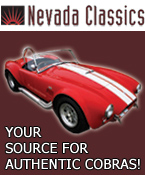What would it take to move it to 6000 rpm?
Here is what I have
weight 2315 no gas 17 gal fuel cell 185 lb driver
8.8 '89 Mustang rear end with 3:55 gears and BFG G-Force tires ( 25.25" tall)
4 link with adjustable coil overs
54.5% rear weight and 46.3% front
TKO 600 with 2.87 1.89 1.28 1.0 .64 gears
10 1/2" McLeod clutch, 50 oz billel steel flywheel
96 5.0 truck block
Eagle forged 3.47" crank, SIR 540CB forged rods, SRP forged pistons #144995
354 cid 10.67 CR
Romac aluminum 50 oz damper
all rotating assembly balanced by local shop
Comp cam XE274HR-12
Brand: COMP Cams
Product Line: COMP Cams Xtreme Energy Camshafts
Part Type: Camshafts
Cam Style: Hydraulic roller tappet
Basic Operating RPM Range: 2,200-6,200
Intake Duration at 050 inch Lift: 224
Exhaust Duration at 050 inch Lift: 232
Duration at 050 inch Lift: 224 int./232 exh.
Advertised Intake Duration: 274
Advertised Exhaust Duration: 282
Advertised Duration: 274 int./282 exh.
Intake Valve Lift with Factory Rocker Arm Ratio: 0.555 in.
Exhaust Valve Lift with Factory Rocker Arm Ratio: 0.565 in.
Valve Lift with Factory Rocker Arm Ratio: 0.555 int./0.565 exh. lift
Lobe Separation (degrees): 112
Intake Valve Lash: 0.000 in.
Exhaust Valve Lash: 0.000 in.
Computer Controlled Compatible: Yes
Grind Number: FW XE274HR-12
1.7 roller rockers
Pro Com aluminum heads: 190cc runners - 60cc combustion camber - raised exh port .25"
int. 2.02" & 1.6" exh valves -- heads will flow approx. 270cfm intake and 200 cfm exh @600 lift
36 lb injectors and a Granatelli 90 mm mass air meter
Mallery multi spark ignition box and a 89 Mustang computer A9L with a
Custom SCT chip to make it all work together. Car dyno'ed with chip.
Melling HV
oil pump 65 cold idle & 30 hot psi
Holley SysMax II upper and lower intake
73 mm BBK throttle body
stock 89 Mustang distributor
8.5 mm MSD wires
7 qt Cannon
oil pan
3/8" fuel line, stock 89 Mustang fuel rail, holley fuel pump 255 lph #HLL-512-105, adjustable pressure regulator set at 38.5 lb.
March aluminum pulleys, under drive on crank and water pump only
1 5/8" equal length header 40" long dumping into 3 1/2" side pipes
I would like to move the tq & HP up to the 2500-6200 rpm range. I also would like the tq & hp to be close to the same. 375 / 375 rear wheel would be nice. What do you guys think I need to change?
If there is any more info you need just ask. Thanks for the help.
Dwight


